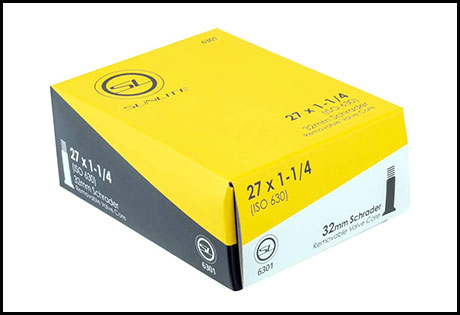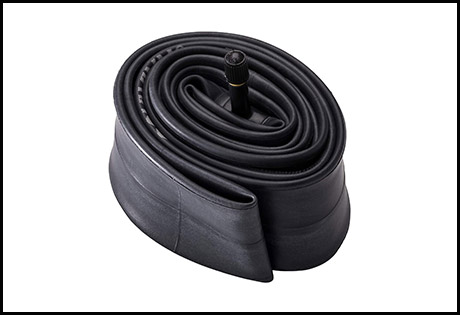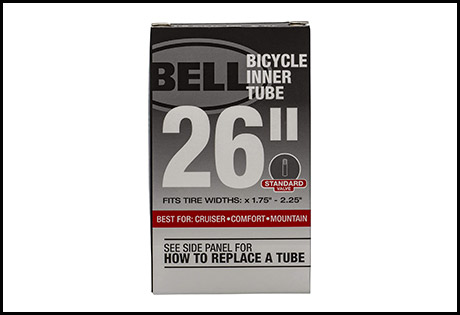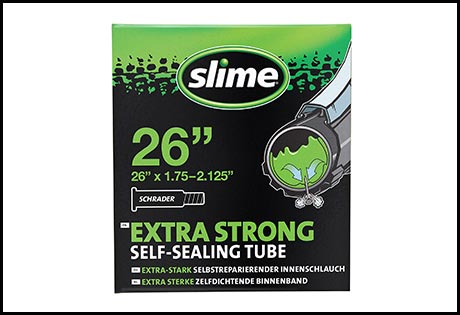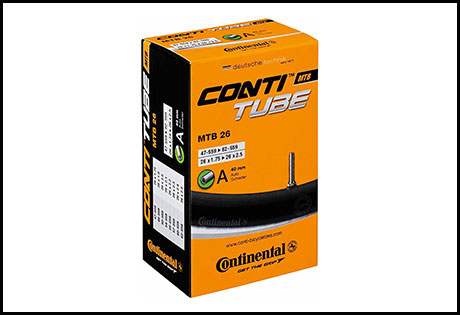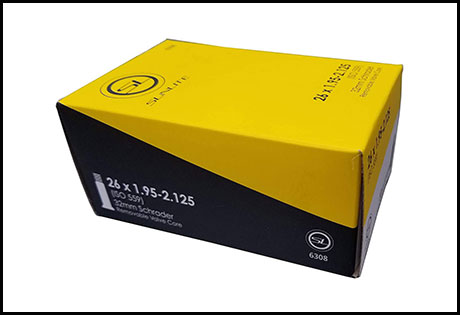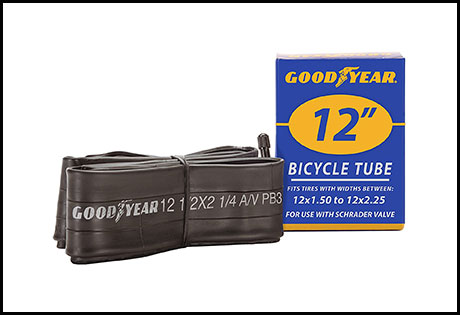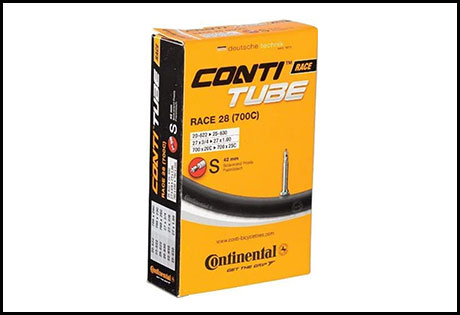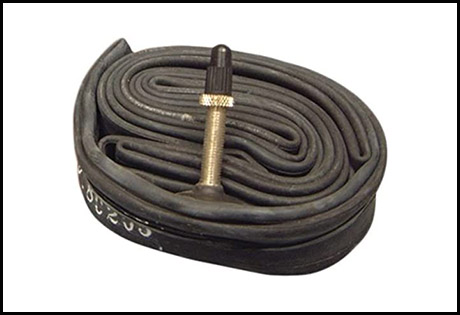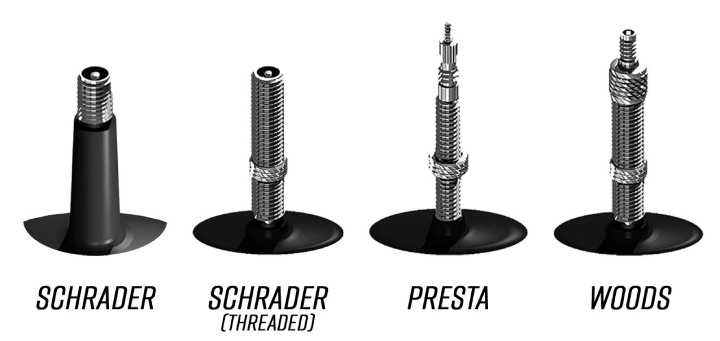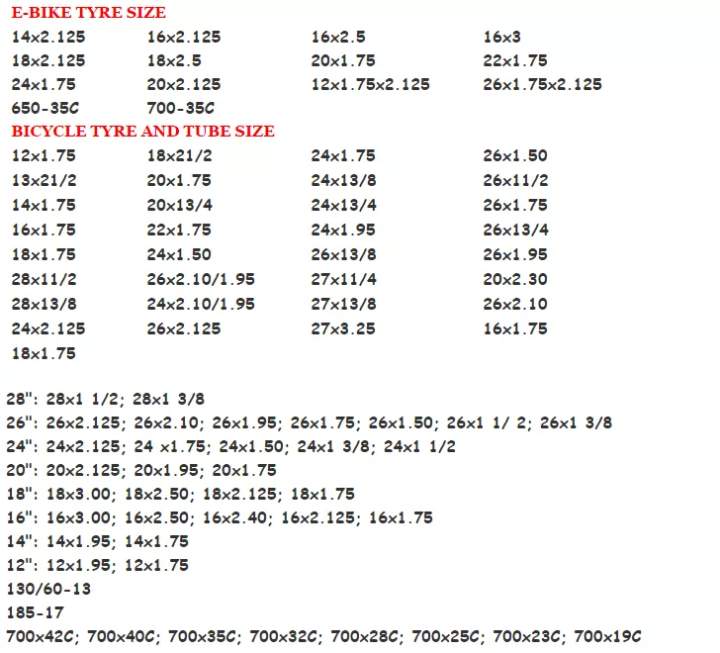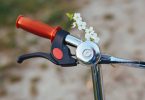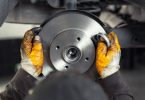It’s a wonderful sunny day and you’re on your favorite bike. The wind is in your hair and the scenery around you is simply breathtaking. You are on cloud nine as life could not get any better. Then it happens suddenly – a flat tire – perhaps in the middle of nowhere!
Well, buying bicycle tubes is getting just as complex as buying the bike itself these days. Twenty questions later and you’re still nowhere close to getting back on the road. You just want one that will fit your tire and won’t blow up on you as soon as you can but it seems like luck isn’t on your side this time.
Fret not, we’re here to help. Our carefully selected and thoroughly reviewed inner bicycle tubes will help you make up your mind and finally hit the road!
Our Top 10 Best Bike Tubes – Review
So, which tube is best for bike? Well, that depends on a number of variables, or in other words, the bike’s requirements. We have a list of 10 top tubes reviewed in the following section for you to choose the right one for your bike.
Top Schrader valve Tubes
01 Sunlite Standard Schrader Valve Tube
The Sunlite Bike Tube has made an impact on the cycling industry owing to high-quality equipment and accessories.
We got down to the task of testing each bike tube fitted on our own bike, a 27” cruiser where possible. The most famous product of this family is the Sunlite Standard Schrader valve tube which is the result of many engineers and industry professionals putting their heads together. This is the best mountain bike tube as it keeps the bike stable and well protected from flat tires and punctures.
One of our testers was brave and well versed with MTB bikes and took one fitted with a Sunlite tube for a spin. He chose a rocky, potholed trail, did his round, clambered off the bike and commented- darn impressive. We measured any loss of pressure and found it held at 55 psi.
The Sunlite bike tubes are also suitable for cruisers and other bikes with a 29 inch wheelbase (also known as 29er). The valve is 48mm and swapping tubes is a cinch No extensions or adaptors are required which are savings. We tried to gauge the ease of changing tubes by doing it ourselves and yes, it was a song. What’s more, you always have a spare as they come in a two pack.
The key features are:
- Multiple sizes
- Has a wall thickness of 0.9mm
- The valve core is removable
Pros
- Extremely affordable
- Pack of 2
- Installation very easy
- 48mm valve
Cons
- Flimsy welding of seam
Our Verdict
The Sunlite Standard Shrader Valve Tube is simply the best bike tube in the industry. A small word of advice from us – put a small amount of air inside the tube when changing to prevent bunching up and a bubble forming. Also, inflate slowly. We were, however, a little concerned at the valve base connection. But we still go with Sunlite.
02 Schwinn Replacement Bike Tube
The Schwinn Replacement tube has the capacity of self-sealing. So bid goodbye to get stranded mid-trail or having to change tubes by the side of the road. Of course, it is good for small holes, not a large gash. Its availability is in many sizes to fit a wide range of bikes. It has a Schrader valve.
These tubes have been around for ages which signal their pedigree. Excellent durability is their hallmark. The company takes great pride in obliging the needs of its customer base. This is accomplished with a splendid design. Many online platforms we found to testify to this.
The Schwinn inner tube is made of high-quality butyl rubber which is the key to high durability, strength and loads that are excessive. To obviate tearing or any breakage the valve stems are reinforced.
The tube is mold cured with all the pluses that come with it; greater roundability and so on.
If one has to look for any drawbacks it would be the price which is on the higher side.
Our thorough scrutiny indicated that a manufacturing defect was responsible for a steady minute air leak emanating from the stem valve junction. On pursuing the lead we were assured by the Company that it would certainly be looked into and rectified using their high standards.
Pros
- Puncture resistant
- Made of cold cured rubber
- Fabricated from high-quality butyl rubber
- Extremely durable
Cons
- Pricey
Our Verdict
Our research revealed that Schwinn is a company with many years of expertise in the bicycle innertube industry. It is a bike system that brings forth the ultimate in durability and robustness bringing you peace of mind from repeated flats. Our verdict is that this is good value for money even if the general consensus is that it is on the costlier side
03 Bell Standard Self-Sealing Bike Tubes
The Bell Standard self-sealing tube is an all-purpose robust product. The rubber used in its manufacture is mold cured that give sidewall consistency and mitigate blowouts due to high pressure. The valve is a 35mm, capped Schrader type and the tube weight is 210g but usually depends on tire size. The inner tube is reliably tested and high quality ensured. The self-sealant is puncture resistant (or thorn-resistant) and automatically plugs puncture holes of ? “ effectively.
Because it is mold cured, it can withstand high pressures and is a preferred choice for mountain bikes (MTB). Its USP is the rigorous manufacturing process and the quality control that gives the product an undeniable edge.
In the course of our in-depth study of user reviews, we came upon a couple of issues that we wish to point out. The stem can sometimes become clogged with the sealant in cold conditions thereby rendering inflation impossible. A second problem was of the valve stem breaking off, a one-off situation we think. But the customer support team had that replaced in a jiffy. We mention these seeming defects here not that they are a recurring issue but more of a random occurrence.
Pros
- Affordably priced
- Resistant to punctures
- Mold cured rubber makes them highly durable
Cons
- Short lifespan according to some users
Our Verdict
The reliability, durability and performance of the Bell inner tube is simply amazing. The weight appears to increase the rolling resistance somewhat and some users have remarked that the valve stem length was a bit on the lower side. But we never noticed this.
04 Slime 30045 Self-Sealing Smart Tube
Slime Self-healing Smart tubes are filled with a thick liquid that is thorn proof and is puncture healing. They are handy for winter riding, work very well but come with a penalty; extra weight. These tubes have created a niche for themselves in the world of mountain biking and are on the market for these bikes in two sizes; 700c X 28-35mm (700X35c) and 700c X 19-25mm.
They weigh about 170g. Fitting is simple and easy. If a thorn or a nail penetrates the inner tube, air escapes and also a little bit of the green slime escapes and solidifies thus sealing the puncture. It is good for holes of up to 3mm. This is called Fibroseal Technology. The slime is non-toxic and non-corrosive. It can be cleaned or used in moisture without hassles.
Leaks in the tread area are automatically sealed but if you slash the sidewalls, it doesn’t quite work.
We confirmed this USP of the Slime Smart tube by taking a pin and intentionally making a hole. It did work with a drop in pressure from 100psi to 75psi. But when done on a bike that is stationery, it failed. Apparently the wheel needs to be turning to spread the slime.
There have been reports by users of failure at the valve connection but we figure it to be more a one-off issue than a serious fault.
It can be installed just like a standard tube. The bike tires are also well-balanced.
Pros
- Pack of 2
- Puncture free ride
- Good for winter riding
- Easy to install
- Smoother ride
Cons
- Not a light option
- Slightly pricey
Our Verdict
This is a great innovation in that tubes needn’t be replaced or patched. The self-sealing provision is a working and effective method as we found out for ourselves. Though not exactly expensive, it still leans towards the higher side which in our opinion is justified. Yes, rolling resistance is higher because of the increased bike but in mountain biking, it is not a great hindrance.
05 Continental Bike Tube
This size fits 26” X 1.75-2.5 with a 33mm Schrader valve that is removable. The valves being of shorter length and suitable for rim depths of 24-30mm. It is made of a butyl rubber compound. Being of seamless construction, it is manufactured by mold curing.
Tubes should never be an afterthought as unfortunately they are mostly relegated to. It is foolhardy. You may own a premium Merida bicycle but sadly it does not come with immunity against flats. So, never underestimate the importance of having the best inner tubes, such as the Conti bike inner tube.
Continentals Unitube system takes care of compatibility with fewer tubes and more tires. They are seamless and vulcanized imparting greater round ability and enhanced strength at the valve stem.
Continental products have a 100% stringent quality control and are heavy-duty so their tubes are pretty foolproof. This is one company that has tons of experience in hand-crafted tubes for over 100 years. So there are no compromises on quality, safety, and comfort.
We used our cruiser and first fitted a new tube on it. The riding experience was as expected; smooth and comfortable.
Pros
- Well rounded
- Valve stem reliability
- Great compatibility encompassing varied tire sizes
- Reasonable pricing
Cons
- The length of the Schrader valve is a tad short
Our Verdict
The Continental bike tube is a product of great versatility coming from a firm backed by a century of experience. Being subjected to stringent quality tests, its reliability cannot be taken lightly. It is quite economical. Our experience on the saddle was a very comfortable ride. This inner tube is not standard; it surpasses and when you next contemplate purchasing an inner tube, try the Continental.
06 Street Fit 360 Tube
Yet another offering from Sunlite. Irrespective of whether you are using Schrader or Presta, Sunlite has your back covered. The 360 system design is for delivering your desired performance. Irrespective of whether you are employing Schrader or Presta valves, its durability makes it foolproof and compatibility is never the issue here. They are the perfect choice for mountain bikes and cruiser bikes which are of the very same size.
These tubes are sleek and uncomplicated in design. They can be easily inflated or deflated and are slightly thicker for easy handling. It is the flagship of the Sunlite tube Group.
These inner tubes come in a pack of two so that you can at all times have a spare in case of needing to change the tube. Also, you get to save.
The tire bead should sit accurately around the entire rim. This is achieved by gradual inflation till the beading is flush around the rim. In line with the manufacturers’ recommendations, the air pressure can now be topped up.
The valve size is 32mm. The tube size is 26 inch X 1.95-2.125
After careful scrutiny, we did find the claims supportable. Overall the Street Fit 360 Tube meets with our expectations both because of its reliability and affordability.
Some of its key features are:
- East to deflate and inflate
- Available with both kinds of valves; Schrader and Presta
- Replacement tube for a cruiser or a mountain bike.
Pros
- Smooth valves
- Ideal for mountain bikes
- Perfect price
Cons
- Thin wall
Our Verdict
No doubt Street Fit 360 is one of today’s best bike tubes that you can rely on. This is a performing, durable product as our tests have shown us. The bottom line is that it is a great deal. So when you go out to buy a change we recommend the Street Fit 360 which as a bonus comes as a 2-pack whereby you have a spare to fall back on.
07 Goodyear Bicycle Tube
This tube boasts of a Schrader valve from Goodyear and presents a well-balanced blend of price points and choices in tube sizing terms.
Wheel diameters of most standard sizes have these tubes available, even though some diameters have only a limited width range that is manufactured.
Butyl rubber that is durable is the material that the tube is constructed of and can clock many miles easily without flats.
However, these tubes are plagued by manufacturing glitches and like the majority of other inexpensive tubes, suffer from manufacturing faults in that a high probability of tubes begin to leak air on first use or subsequently develop a failure zone around the valve base.
Although careful tube placement on a wheel can somewhat mitigate the flaw, the manufacturing defect can be irksome when a tube otherwise new fails to keep the air intact.
In our investigations, we did discover some of these tubes had been on shelves for a long time. After pouring through scores of user reviews, we came to the conclusion that as rubber can degrade if stored at higher temperatures for a long time, this could be a reason for some tires to develop faults.
These tubes are specifically for kids’ bikes with 12-inch wheel sizes and a width of 1.5-2.
Pros
- For a Schrader valve tube, price affordable
- Available in standard wheel diameters
- Constructed of robust butyl rubber
Cons
- Few diameter sizes have only one tube width available
Our Verdict
The Goodyear inner tube has much going for it. We were appalled by the reported air leak defect but on communicating with the manufacturer discovered that yes, they did find on investigation that one batch was sub-standard in the area and offered a free replacement. Goodyear is one of the premier companies engaged in rubber products and has an ironclad quality control system. This is a one-off situation and customers are advised not to pay heed.
Top Presta Valve Bicycle Tubes
08 Continental 42mm Presta Valve Tube
The Continental tube is in a class of its own – you will find the same tube sold at a lot of local bike outlets and on the wheels nearly of all road bikers during their training rides.
Road wheels are available in 3 diameters – 26”, 29” and 700c – and in a range of widths corresponding to each diameter category.
Tubes having Schrader valves are available, but the size availability scope is limited primarily because this is considered to be for tubes having a Presta valve. The stem of the 42 mm long that is adequate for a majority of road wheels with a 60 mm variety available for almost all of the sizes of tubes for bikers having deep rims.
Additionally, all the cores of the Presta are removable in the event you want to attach an extended valve. Butyl rubber is the constituent of the tubes and is supremely durable, though a bit heavy for racing.
We find that this is indeed a product that is well-rounded and with superior features. It is the preferred tube for champions and riders all over the world. The tubes are vulcanized to ensure uniform roundness and greater reliability at the valve stem junction.
Pros
- Presta valve
- Wide range of standard wheel sizes.
- 42mm, 60mm valve stems
- The core can be removed
- Highly durable
Cons
-
- Options for Schrader are limited
- Heavy butyl rubber
Our Verdict
With such features as the superior premium Presta stem valve and removable core, the Continental 42mm is in a class of its own. Moreover, the numerous size options stand it in good stead. That it is widely available is a benchmark of its popularity. We, in our overall score of this tube, were very much enamored of its features, reliability, and performance. That it enjoys widespread popularity comes as little surprise. It’s a solid deal for sale and offers a good value for the price.
09 Kenda Tube Bicycle Tire Tube
Kenda Tubes is a household name worldwide. Both among road bike enthusiasts and pros, Kenda tubes enjoy huge popularity. It is the trust factor in them to deliver high quality as also performance than other brands in existence. Their experience runs deep and is of many years in the design of bike tubes. In-depth study and research by seasoned professionals ensure that you get the highest return from your money.
It fits a tire size of 26” X 1.9-2.125. The valve is a threaded Presta of 48mm stem length. The material it is made of is butyl rubber. The features of these tubes are a smooth valve, molded containers, and a wall thickness not exceeding 0.87 mm. The quality level is hiked up appreciably by the tubes molding, which further increases in the lifespan.
The butyl rubber is quite durable and though the wall thickness is on the lower side, it is one of the best road bike tubes out there because of its ease of using an air pump. Experts recommend that extra caution be exercised when inflating, deflating and installing these tubes on mountain bikes.
The construction of Kenda tubes uses a technique of tightened rubber. This gives you a dual advantage; easy adjustment to varying tire sizes and secondly, air retention is longer.
Pros
- Smooth valves
- Excellent price
- Good customer service
- Lightweight
Cons
- Thin valves
Our Verdict
Kenda does not need a second mention. Having been in the field for ages, they enjoy immense popularity. These inner tubes come with a host of features that readily show that a lot of experience and innovation has been invested in the creation of these tubes.
10 Sunlite Standard Bike Tube
A smooth 48mm Presta valve is fitted on this Sunlite product. These high-quality tubes from Sunlite are available in many tube sizes. So is the Presta stem valve also. Some tube varieties have a removable core. Though recommended for mountain bikes, it can be used on strollers, road bikes, and cruisers equally effectively. It weighs 0.02 pounds.
The tube is made of VEE rubber and is on the thicker side. Usually, this would indicate greater durability and the Sunlite Standard bike tube does not disappoint in the extended lifespan it offers. The tube is made for wider tires and is easily foldable with zero risks of leaks developing.
It is obtainable in different sizes.
Another lucrative offering is that Sunlite tubes present many choices for pricing and size.
It also has a unique air tightening feature.
Our review team found the Sunlite Standard Bike tube rather unique in the bouquet of features that it has bundled into this tire. The combination of thicker tube material, wider tire suitability, and relatively low weight make it a winner.
It is a good choice for bmx bikes.
Pros
- Reliable stem valve
- Durable rubber
- Easily removable core
- Easy installation
- No leaks in folding
Cons
- Economically priced but can vary with size
Our Verdict
Once in a while, we stumble upon a product that we are reviewing that draws our breath away. It is the sheer aptness of the features bundled. Evidently much thought and experience have gone into the Sunlite Standard bike tube. We find similarities here with the Kenda. The removable core is a feature that we find highly desirable. However, riding ease was a wee bit hampered possible as a cause of the thicker and wider tube. Some may say it is pricey. Still, though, we would recommend this tube as a worthy buy.
Best Bike Tube – Buying Guide
1. Types of Valves
Schrader Vs Presta
It is quite remarkable that such a tiny part assumes great importance in giving a smooth ride. Over and above, many people assume that it is not important to know it’s working. Wrong. It needs more knowledge than assumed to check on correct functioning.
So what are these valves? The Schrader valve is commonly used (including on automobiles) and is usually found on common bike models. The Presta is found more on high-end bikes.
The Schrader valve is broader than a Presta and the outer part is threaded right down the length. Sealing of the opening is attained with a screw-down cap. At the center is a check valve with a spindle that when depressed allows air in only.
The Prest valve is slimmer, is tapered and is closed with a knurled, threaded cap. It does not make use of a check nut but is sealed by the pressure in the tube.
A Presta valve, also called a French valve, is preferred for the following reasons:
- Because the hole in the rim is small and thus contributes to rim strength.
- They are lighter too and so do not require a counterweight to ensure smooth wheel rolling.
- They seal tightly on air-pressure alone unlike a Schrader with its mechanical check valve that can clog.
- Adaptors are used for the extension.
2. Bike Type
The choice and dimensions of an inner tube are wholly dependant on the type of bike and the wheel. Road bikes use 700c wheels and gravel bikes 650b wheels. City and hybrid bikes use 26” wheels with broader tires for convenient commuting. Folding bikes and toddler bikes have different wheel sizes.
3. Wheel Size & Diameter
Obtaining the correct bike tube size is pivotal to taper down pinching and over-stretching, both of which will lead to a flat tire. The dimensions are usually stamped on the tube. The diameter of the tube and that of the tire should match. A mismatch will make it difficult to change the tube and the tube is more prone to a flat. A few common diameters are 700c for a road bike, 24” for a BMX tire, 27” for a standard US bicycle and 26” for a fat tire.
4. Tire Width
These are marked prominently on the tube itself. The number after the diameter of the tube which comes foremost is the tube size. For example, a marking that says 27” X1 ¼ indicates that the width of the tire. Here again, like choosing a tube diameter according to the diameter of the tire, it is a good practice to go with the tire width for the tube.
5. Tube Material
Latex rubber or butyl rubber is the main constituent of bicycle tubes. They can balloon and are shaped like a doughnut. Provision for inflation by means of a valve is provided. The main differentiator between the two types is that standard rubber tubes are less flexible than latex tubes. When riding, they adjust rapidly altering shape. Latex tubes are also faster and lighter.
When exposed to grease and oil, latex manifest sensitivity. However, rubber tubes score higher in retaining air longer. They are also more fragile and therefore require frequent changing of tubes.
Carbon rims do not so transmit heat as readily as the alloy ones. So every time you brake, a hotspot is created that can damage the inner tube.
6. Puncture Resistance
If a removable core is provided with your bike tube, by the addition of a good sealant, puncture protection can be achieved, and you don’t have visit a shop for that. Add the sealant after removing the core and replace back. Large holes may not be affected but smaller holes will be taken care of. Some sealants are not compatible with latex tires and will fail over time.
7. Rolling Resistance
Rolling resistance is the force required to bend the tire where it makes road contact. That is applicable to the inner tube also. If it is too thick, the rolling resistance will be higher. The flexibility of the inner tube makes a great deal of difference. Latex is more flexible and thinner so it is suitable. A saving of 4-5 watts is indicated.
The disadvantage is that latex tubes are porous and hence leak air more quickly. They need to be topped up every time before use. Nowadays butyl rubber tubes are being made lightweight and are flexible with lower rolling resistance.
8. Wall Thickness
Mostly, tubes have a wall thickness of 1mm. Lesser wall thickness increases the probability of punctures. So if you decide on a tube with a lesser wall thickness than 1mm be prepared for more maintenance.
9. Weight & Thickness
Without bothering inordinately about puncture prevention, a tube weight reduction is an answer. Typically an inexpensive inner tube weighs 100-110g. More expensive tubes can weigh as low as 55g (all weights are inclusive of 60mm valves). It is well worth it to get lighter inner tubes.
10. Tubeless Tires
Tubeless tires have been in use on mountain bikes for some time now. Just recently have they made inroads into road tires. You will require to have a wheel that is tubeless-ready and a tire too. Otherwise, chances are that your tire will blow. A Presta valve is an attribute of tubeless tires. The valve needs to be connected first before mounting the tubeless tire. Going tubeless can be a tad tricky especially getting an airtight seal on the rim. Probably you will want to use a sealant for this with the added bonus of small punctures being taken care of.
11. Special Features
- Self-Sealing: self-sealing tubes are partially filled with the slime tire sealant that’s evenly distributed around the tube. When a puncture occurs, it stops the leak that adds to durability.
- Extra Toughness: this is a determinant of wall thickness and the tire sidewall reinforcement.
FAQs
1. How to procure the correct size of the bike tube?
The failproof method is to refer to your manual. The tube size is directly related to rim size diameter. Just use a measuring tape to ascertain the rim diameter. This is the required tube diameter.
2. How can I change the inner tube of my bike?
The first move is to remove the wheel that has the flat. Deflate the tube and remove the tube. This can be accomplished with a wrench or even a shoehorn to lever out the edges of the tire. Do not use a screwdriver as the chances of further damage are great. Once the tube is off the rims, replace it with a new tube and not another old tube. Inflate slowly checking that the tire beading is sitting properly.
3. Do inner tubes make any difference?
An inner tube provides a cushion of air for your bike. This dampens vibrations and makes your ride more comfortable and smooth. You cannot expect the same ride quality with tubeless tires.
4. What use can old bike tubes be put to?
Retain old tubes. You can recycle them to cut out a patch when you need to repair punctures
You can use a little bit of DIY engineering to fashion a tool roll for your bike.
Again another DIY effort. You can easily rig fenders using some wire and a used tube.

